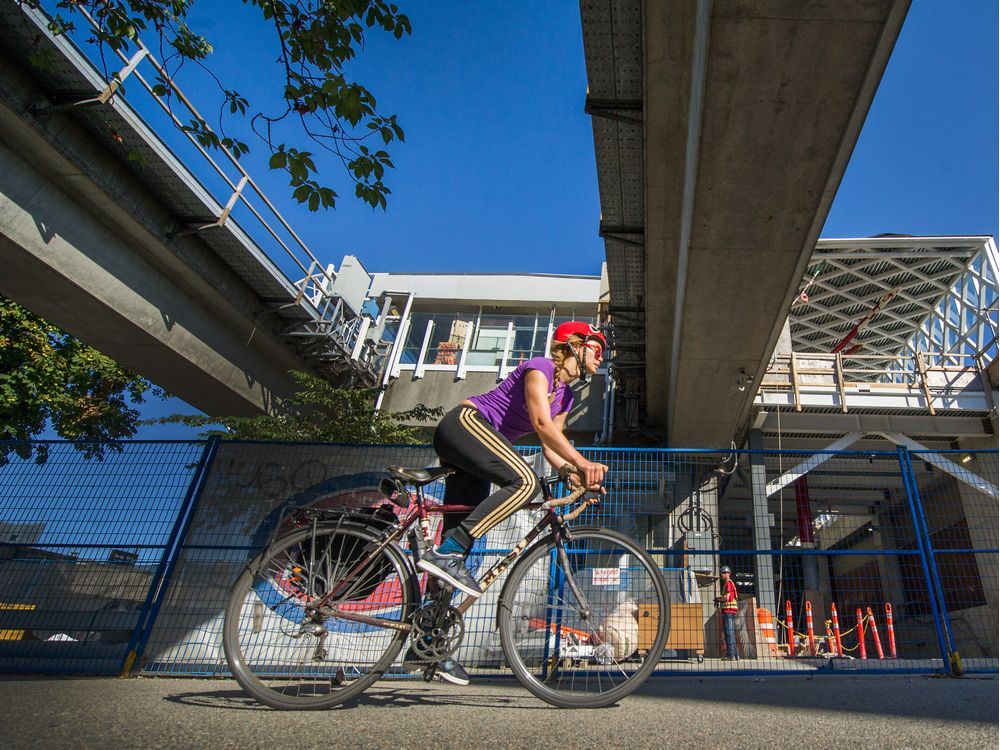smallspy
Senior Member
I was specifically addressing the points he was making. While yes I do know that trains will short turn at Laird, the question is still can you run trains every 90s in the central section, and the possibility is dubious at best.
A 90 second headway is going to be difficult to achieve on a consistent basis, I'll concede that.
But from my conversations with people who work in that field, it's not completely impossible. It should be sustainable in short bursts over specific parts of the network - just like how it was possible on the YUS prior to the upgrade to ATC/ATO. And is still possible afterwards.
Now, will the organizations operating the line be capable of doing it on a consistent basis? I'll leave that for you to decide. The fixed plant can do it though.
The trains coming in from Sunnybrooke Park have to be precisely on point - coming in exactly 90s after the previous train left the station, with maybe a tolerance of +5 to 10s, if you choose to modulate the speed at which the train travels between Sunnybrooke Park and Laird. That is still something that requires a significant amount of precision in how you run the trains that would require some insane super TSP - something that wouldn't be feasible at 3 minute headways.
That kind of thing is not nearly as hard as you envision it. Modern signal systems such as the one installed in the Crosstown are capable of making that determination on the fly, and can insert a waiting train if they feel the gap will be too large.
Hell, even the Seltrac system used on the SRT can do it. Not that there are any locations for it to do it with.....
Again, according to sound transit, an at grade LRT alignment has a headway limit of every 5 minutes, so okay, let's move the requirement and have even more trains short turn at Laird.
What are their requirements? Their train lengths? What kind of signal system do they have installed at crossing streets?
Just pulling someone's data without context - or knowing what the specs are - isn't particularly helpful.
First, in order to get above that 5 minute minimum, you can only send 1/4 trains beyond laird, so immediately you're creating a situation where you're going to have people just standing on the platforms waiting for the right 1/4 train to arrive which... isn't great.
Sure....but if you're only sending one quarter of the trains through, then that means that you have a situation where the ridership drops off past that location.
Plus, it's not like the trains will be full approaching that station, having dropped off most of their passengers at the previous stations.
Second, you still have to assume that the total amount of disruption that occurs to a train doesn't exceed a time loss of more than 15s - which is almost impossible to assure when you have a train running out in the open that has to deal with idiot pedestrians and drivers.
That's an incorrect assumption to make. The time loss on any single train is irrelevant, provided the system is prepared to fill its time slot with another train.
If the system isn't set up for that, then yes, you have a problem. Not a big problem, and certainly not as much as you are making it, but a problem nonetheless.
You're going to have cars crossing the street during traffic that drove ahead and is now stuck in the middle of the road, pedestrians that decided its a genius move to jaywalk while there is an oncoming train, old ladies that are taking their sweet time crossing to reach the station even after the signal has turned red, pedestrians that decided to walk along the track for some inexplicable reason (believe it or not this isn't that uncommon of a thing), and much more.
Nice straw man.
When you have an open system like this, guaranteeing precision at a specific part of the line is basically impossible. You're going to have trains that are late or early by at least 30s on the regular - and this is enough to completely break any notion of 90s. Something like 2-2.5 minute headways might be possible, in fact I'd wager on seeing at most 2.5 minutes before major upgrades are done in the eastern section, but certainly not 90s.
Again, it's not impossible. It complicates things, sure. But it can be mitigated with careful design.
Dan
